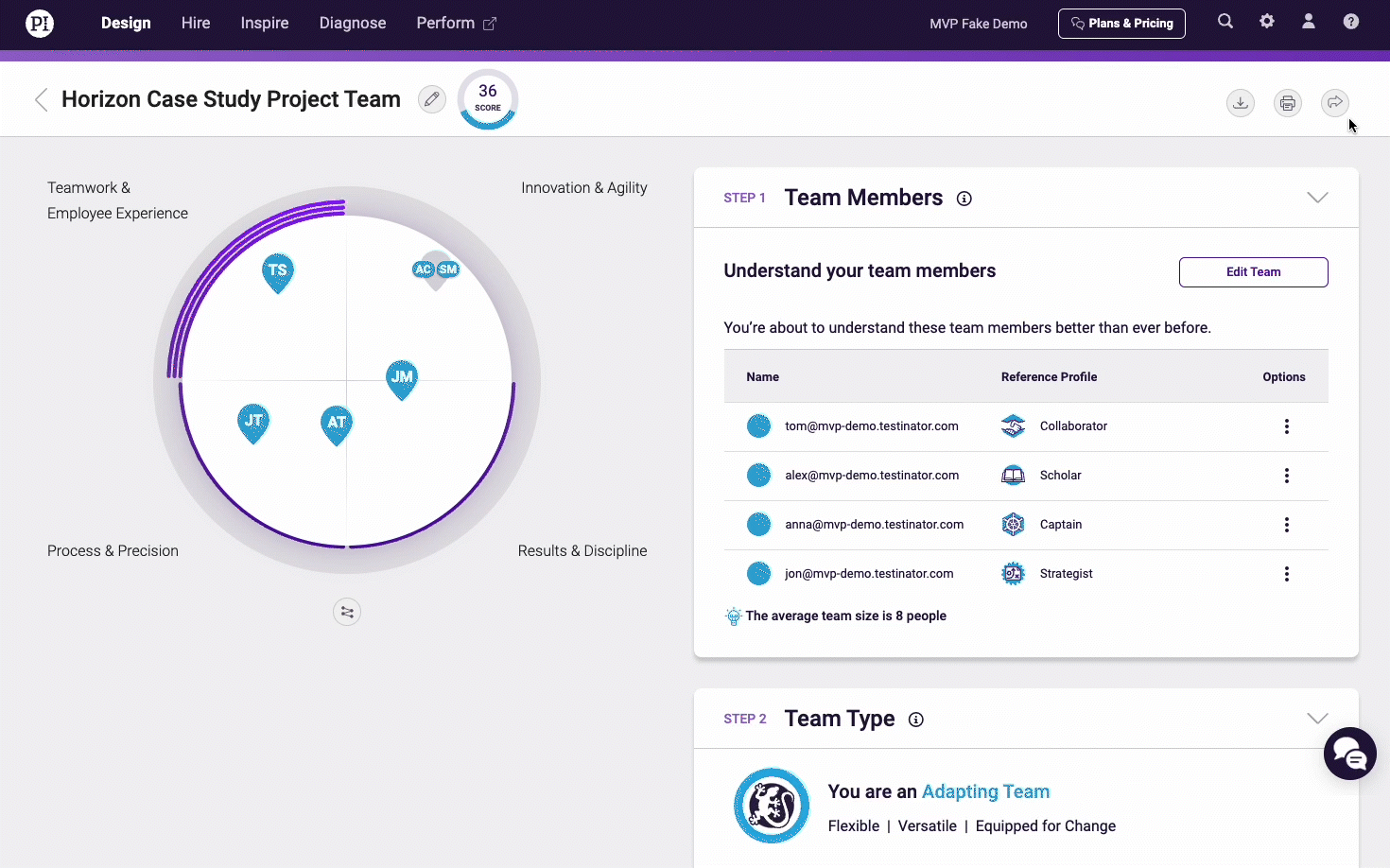This blog post is the third in a four-part series covering the four behavioral drives that The Predictive Index measures in its PI Behavioral Assessment.
The patience drive
Patience is the drive to have consistency and stability in one’s environment.
A high-patience employee is calm, stable, and steady. He’s unhurried in his work, and he’s content to perform routine tasks over a long period of time. He’s most comfortable with the familiar and accepting things exactly as they are. For this reason, consistency is key for the high-patience worker.
A high-patience employee will be methodical in his work. From a social perspective, his drive compels him to seek a type of familial relationship with co-workers. His are closely-knit bonds built over time and through regular interactions.
Change is of particular relevance—and consternation—to high-patience employees. In a business environment that can be tumultuous and chaotic at times, high-patience workers require special consideration. PI’s own Megan Holsinger, Director of Client Success, advises that for high-patience workers “change can happen, but in digestible amounts over time.”
Join 10,000 companies solving the most complex people problems with PI.
Hire the right people, inspire their best work, design dream teams, and sustain engagement for the long haul.
Working for a high-patience boss
If your manager is a high-patience person, she will be calculated and deliberate in her management style. She will use a series of ceremonies and routines to keep your team on track. Think of regularly recurring meetings and standard operating procedures here.
For her, change takes time. If she and her team are impacted by some larger change in the organization or external environment, expect her to take the necessary time to process. Hers is a stabilizing pattern, so she will bring a steadiness to her work. Don’t surprise her as this runs directly against her preferred working style. She will be relaxed and unhurried in her work, and she will likely expect you to take the same approach in yours.
Managing the high-patience employee
If you’re the supervisor of a high-patience direct report, you can expect to hang on to them for a long time. In fact, high-patience employees have a need for long-term affiliation and security in terms of their employment standing. Be sure to recognize them for the loyalty they demonstrate through their longevity.
High-patience people crave familiar surroundings, so try to keep office moves and changes to a minimum. In terms of day-to-day work, high-patience people need to be protected from rapidly changing priorities. Give high-patience workers a game plan, and stick to it as long as you can. Make sure to surround them with a caring and supportive team.
Chloe Anderson, VP of human resources at The UIP Companies, observes that “High-patience people thrive where there is predictability and routine. They can handle additional work but prefer prior warning.”
Low patience at work
A low-patience employee doesn’t have a need for stability and consistency. Instead, she will be restless and driving. She has a bias for action. She can be impatient and even intense at times; in fact, she might be guilty of take a “ready, fire, aim” approach to getting things done. She is uncomfortable with the idea of being comfortable. She’d rather things be dynamic and fluid rather than stagnant and unchanging.
Everything about her is fast-paced—her thought patterns, her talk, her willingness to throw herself into action. During times of change, she will adjust quickly and happily. Anything that brings a little variety into the picture is a welcome part of her work.
Working for a low-patience boss
The thing that a low-patience manager wants most is action. Now, please. Standing still is not an option for your low-patience supervisor. There’s too much to be done, and it should’ve been done by now. Your challenge is to match his sense of urgency.
It’s not easy working for a low-patience boss. At times, he can create a lot of pressure to make things happen. You’ve got to be prepared to move very quickly in your work. At times, you may feel as if you can’t keep up. Expect him to be extremely intolerant of delays. In his head, the clock is always ticking. If you’re also a low-patience person, try to ensure the two of you don’t move too quickly at the expense of quality. If you’re a high-patience person, remember his need for speed by choosing carefully when asking to slow things down.
Managing the low-patience employee
When a low-patience employee works for you, do everything you can to give her variety in terms of her working assignments. If there are some routine aspects of her job, give her the flexibility to bounce between these for a change of pace. She will make fast work of nearly everything you give her, but be sure to keep an eye on quality. She appreciates mobility, so give her space and options about where and how her work gets done to the best extent you can.
She will be very comfortable chasing down multiple priorities at the same time. Her greatest need is avoiding routine and a working rut. She will thrive when timelines are tight and schedules need to be met. She can be a dynamo on your team if you let her.
Mix and match
High and low patience are the the yin and the yang that are necessary in almost every organization. Together, these drives make a great pairing. Low patience has the drive to get it done. High patience has the drive to keep it together. Either one alone can cause significant issues in an organization that needs growth and stability, however. When interacting with one another, these differing types can experience conflict due to pace issues, so be mindful of interactions between these differently driven people.
Some roles may even contain a mix of low-patience and high-patience job requirements. Laura Bennett, director of business development at Custom Protect Ear provides this example: “Low-patience people are ready to move on to the next challenge, and those who are knowledgeable and experienced are often successful in sales.” She goes on to say that “often, when it comes to customer service or a detailed paperwork trail, low-patience people don’t always perform the best.”








